If you want to know about the Types of slabs or Permeable concrete or Islamic architecture, please click the link.
Introduction
Metaphoric architecture is a captivating approach that intertwines symbolism and design to create buildings and structures that transcend mere functionality.
It goes beyond the conventional understanding of architecture by employing metaphors and symbolic elements to communicate ideas, evoke emotions, and establish a profound connection between the built environment and its users.

Symbolism has always played a significant role in architecture, as architects have used various visual elements to convey meanings and messages. From ancient civilizations to modern times, buildings have been adorned with symbolic motifs, sculptural details, and allegorical representations.
These symbols served to reflect cultural values, religious beliefs, or historical narratives, creating a sense of identity and belonging within the built environment.
Metaphoric architecture takes symbolism to new heights, infusing it into the very essence of the design process. It utilizes metaphors, which are symbolic representations that draw parallels between disparate concepts or ideas.
By harnessing the power of metaphor, architects can transcend the physicality of structures and imbue them with deeper meanings and narratives.
1) Understanding Metaphoric Architecture
Metaphoric architecture can be defined as an approach to design that incorporates symbolic elements and metaphors to create buildings and structures that go beyond their functional purposes. It involves using architecture as a language, employing visual cues, forms, and spatial arrangements to convey deeper meanings, evoke emotions, and tell stories.
The fundamental principles of metaphoric architecture revolve around the integration of symbolism, metaphor, and narrative into the design process. These principles include:
- Symbolic Representation: Metaphoric architecture utilizes symbolic elements, such as shapes, patterns, materials, and colors, to represent abstract ideas, cultural values, historical references, or human experiences. These symbols act as visual metaphors that enhance the meaning and significance of architectural spaces.
- Contextual Integration: Metaphoric architecture considers the context in which a building or structure is situated. It responds to its surroundings, climate, cultural heritage, and community values, incorporating contextual elements and metaphoric references that resonate with the location and its users.
- Narrative Development: Metaphoric architecture embraces storytelling as a crucial aspect of design. It seeks to engage users by creating a narrative arc within the built environment, guiding them through spaces that unfold like chapters in a story. This narrative development encourages emotional connections and deeper engagement with the architectural experience.
- User Experience: Metaphoric architecture prioritizes the user’s experience and aims to create immersive environments that elicit specific emotions or responses. By using metaphoric elements, architects can shape spatial sequences, lighting conditions, acoustics, and material choices to evoke desired feelings and enhance the overall user experience.
i) Relationship between Metaphor and Architecture:
Metaphor and architecture share a profound relationship, as both rely on symbolism and the power of representation. Metaphors bridge the gap between abstract ideas and concrete forms, enabling architects to express complex concepts through the language of architecture.
In architecture, metaphors serve as tools for communication, enabling architects to convey meanings beyond the literal interpretation of a design. Symbolic representations in architecture evoke cultural, historical, or contextual references that resonate with users, creating a deeper connection between the built environment and human experience.
ii) Metaphoric Architecture as a Medium of Storytelling:
Metaphoric architecture surpasses mere aesthetic considerations and becomes a medium of storytelling. By incorporating metaphors and symbolic elements into the design, architects can create narratives and evoke emotions within architectural spaces.
Through the use of spatial sequences, transitions, and symbolic representations, metaphoric architecture guides users on a journey, unfolding narratives and engaging them in a rich architectural experience. The built environment becomes a stage where stories are told, memories are created, and cultural identities are celebrated.
Metaphoric architecture also allows for the exploration of universal human experiences and themes. It can convey notions of harmony, balance, growth, or transformation, creating spaces that resonate with the human condition and inspire contemplation.
In conclusion, metaphoric architecture goes beyond aesthetics and functionality by integrating symbolism, metaphor, and narrative into the design process.
It utilizes symbolic elements to represent abstract ideas, incorporates metaphors to bridge the gap between concepts and physical forms, and employs storytelling to create immersive environments that engage users on an emotional level.
Through metaphoric architecture, the built environment becomes a powerful medium for expressing ideas, conveying meaning, and shaping human experiences.
2) Metaphoric Architecture in Ancient Civilizations
Ancient civilizations, including Egypt, Greece, and Rome, laid the foundations for metaphoric architecture by integrating symbolic elements into their monumental structures.
These civilizations understood the power of symbolism in architecture to communicate ideas, express cultural beliefs, and convey a sense of grandeur. Examples include:
- Egypt: The ancient Egyptians incorporated metaphoric elements in their architecture, particularly in the design of temples and tombs. The Great Pyramids of Giza, with their triangular shape symbolizing the rays of the sun, served as metaphoric representations of the pharaoh’s divine ascent.

- Greece: Greek architecture employed metaphoric elements to express ideals of beauty, harmony, and the human form. The Parthenon in Athens, adorned with decorative sculptures, symbolized the power and wisdom of the gods, while the Doric and Ionic orders represented different cultural identities.
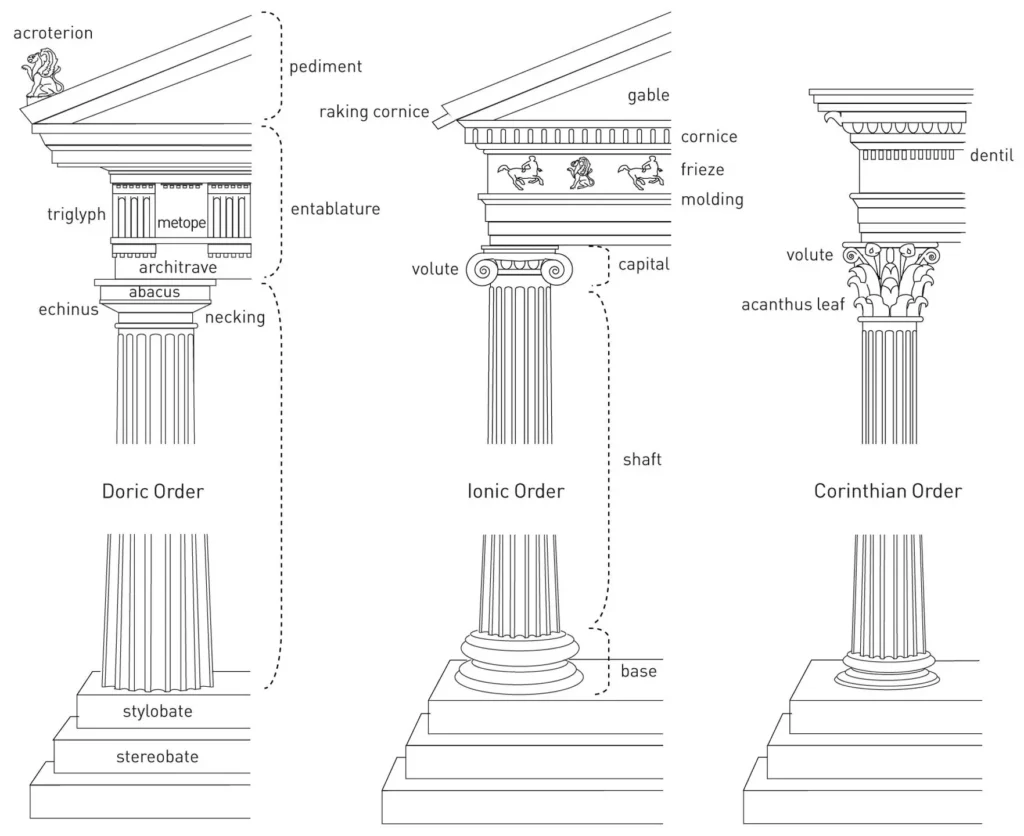
- Rome: Roman architecture inherited the metaphoric traditions of Greece and developed its own symbolic language. The Colosseum, for instance, conveyed notions of power and entertainment, while the Pantheon’s dome represented the heavens and celestial order.
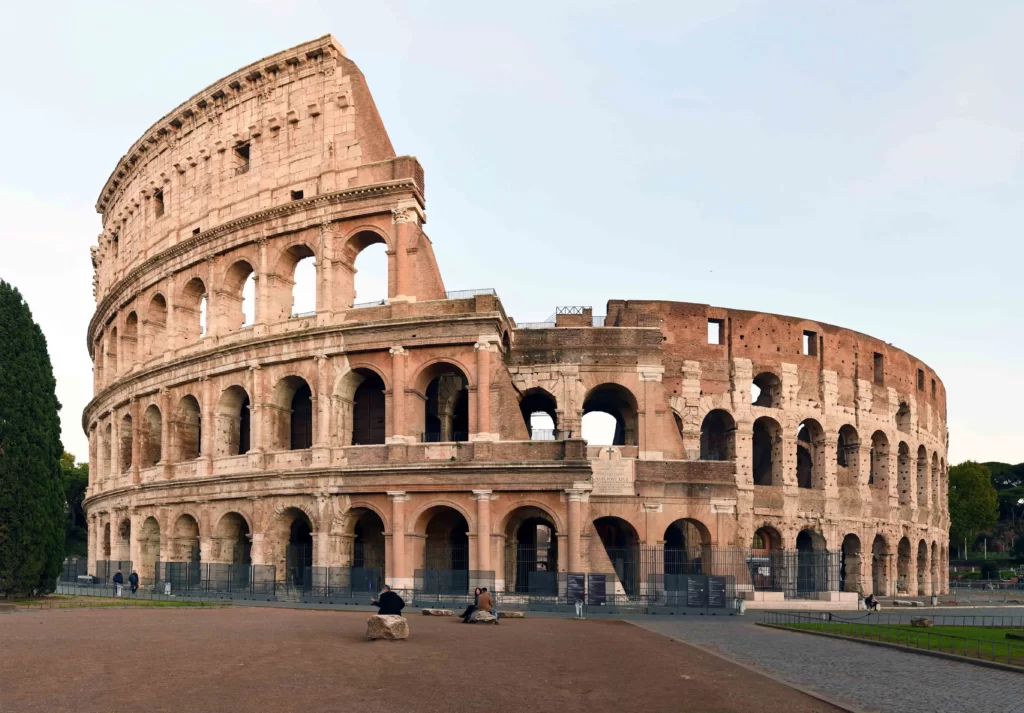
i) Symbolic Architecture in the Renaissance:
During the Renaissance, there was a revival of symbolic architecture, influenced by a renewed interest in classical antiquity. Symbolism was embraced as a means to convey religious, political, and cultural messages. Notable examples from this period include:
- Florence Cathedral (Santa Maria del Fiore): The cathedral’s dome, designed by Filippo Brunelleschi, is a masterpiece of metaphoric architecture. Its construction symbolized the city’s technological and artistic prowess, while its soaring height represented the aspiration for spiritual transcendence.
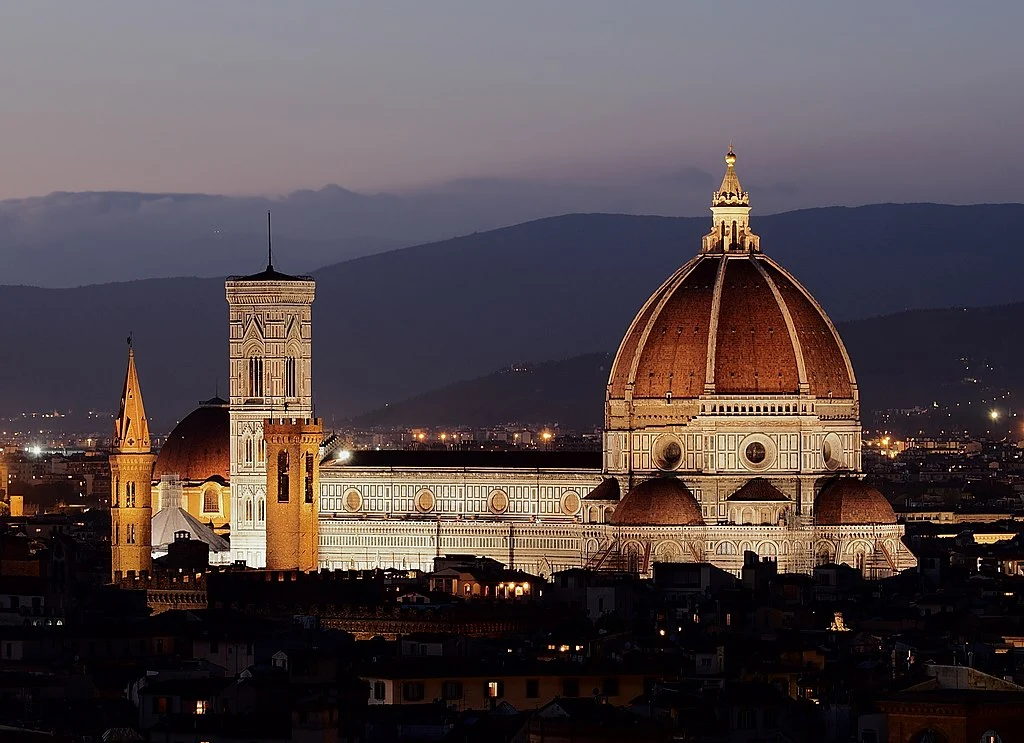
- St. Peter’s Basilica: Located in Vatican City, St. Peter’s Basilica exemplifies the integration of symbolic elements. Its massive dome, designed by Michelangelo and completed by Giacomo della Porta, represents the divine connection between heaven and earth.
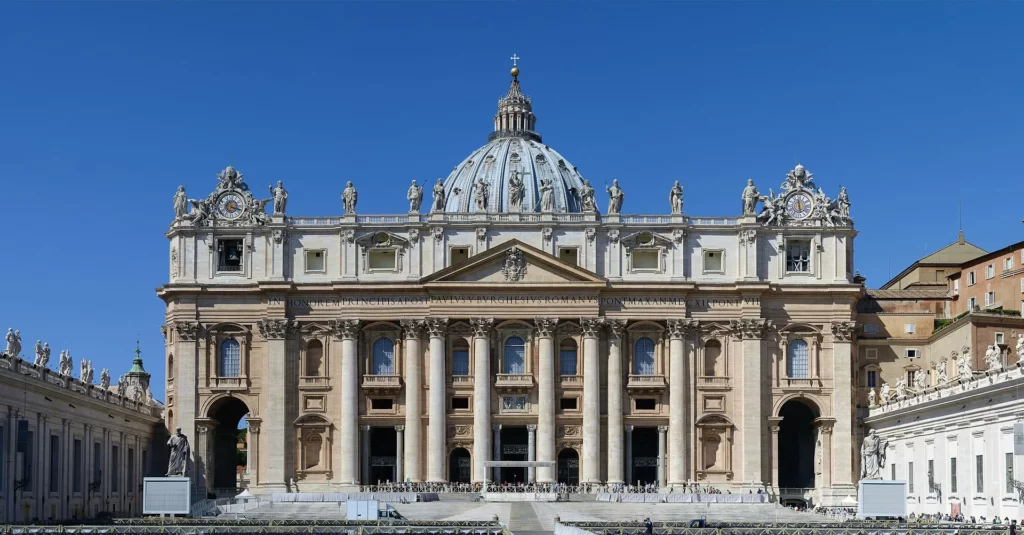
ii) Emergence of Modern Metaphoric Architecture:
In the 20th century, modern metaphoric architecture emerged as architects sought to break away from historical precedents and explore new symbolic expressions. This period witnessed a shift towards abstraction and experimentation, resulting in iconic architectural landmarks. Notable examples and their influences on contemporary practices include:
- Guggenheim Museum Bilbao: Designed by Frank Gehry, this contemporary masterpiece exemplifies the fusion of metaphor and architecture. Its flowing, sculptural form symbolizes the dynamic and transformative power of art and culture, becoming a catalyst for urban revitalization.
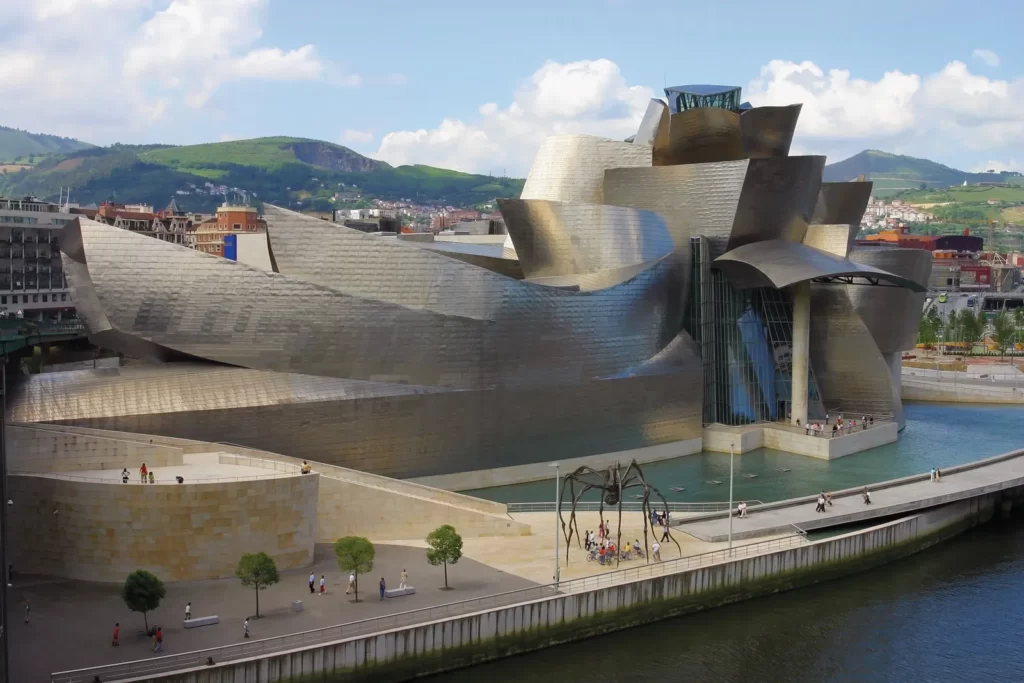
- Sydney Opera House: Designed by Jørn Utzon, the Sydney Opera House is an iconic symbol of Australia. Its distinctive sail-like roofs draw inspiration from the natural forms of shells and represent the harmonious integration of architecture and its waterfront context.
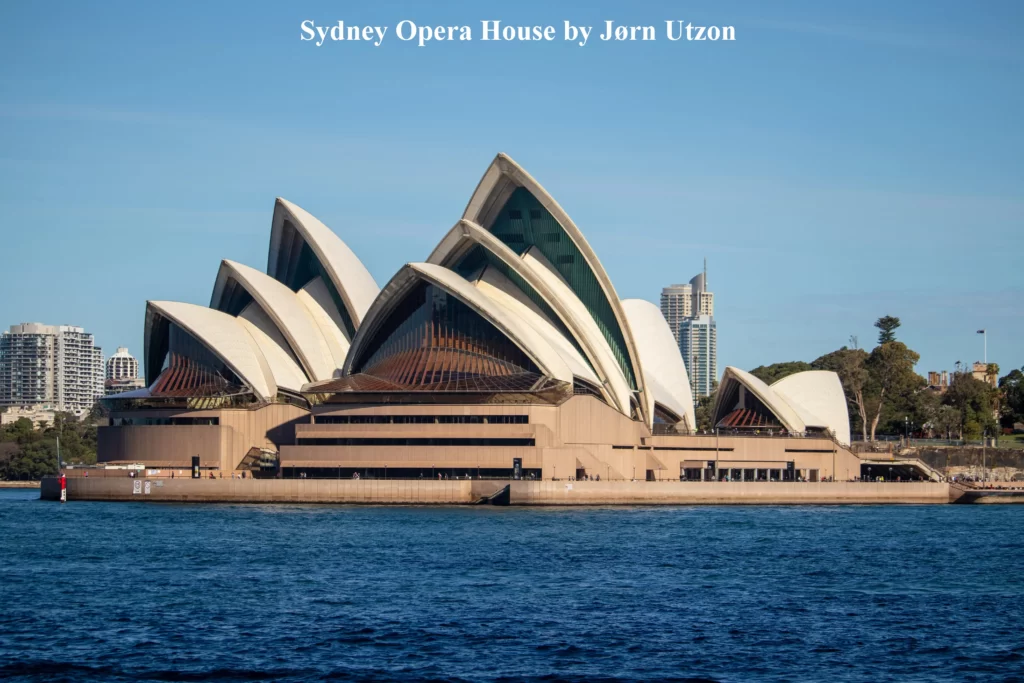
- Burj Khalifa: The world’s tallest building, designed by Adrian Smith, incorporates metaphoric elements inspired by Islamic architecture. Its spiraling form and Islamic geometric patterns symbolize cultural identity, while its verticality represents human ambition and technological achievement.
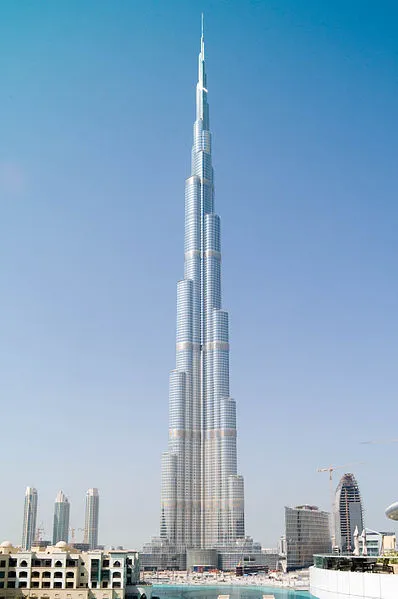
Modern metaphoric architecture continues to influence contemporary architectural practices by encouraging innovative and symbolic design approaches.
Architects today strive to create buildings that engage users, convey narratives, and respond to the cultural, social, and environmental contexts in which they are situated.
The use of metaphoric elements remains a powerful tool for creating memorable and meaningful architectural experiences.
3) Symbolism in Metaphoric Architecture
Symbolism plays a crucial role in metaphoric architecture, allowing architects to imbue their designs with deeper meanings and evoke emotional responses. Symbolic elements can be drawn from cultural, religious, and historical references, enriching the architectural language and creating a profound connection between the built environment and its users.
- Cultural References: Architects often integrate symbols and metaphoric elements that reflect the cultural heritage and identity of a place. This can include incorporating traditional motifs, materials, or spatial arrangements that evoke a sense of belonging and familiarity.
- Religious Symbolism: Metaphoric architecture frequently utilizes religious symbols to express spiritual beliefs and values. Religious motifs, such as crosses, domes, minarets, or mandalas, can be employed to create sacred spaces and foster a sense of transcendence.
- Historical References: Historical events, figures, or narratives can be represented through metaphoric architecture, preserving collective memory and commemorating significant moments. Historical references can manifest as architectural forms, decorative elements, or spatial configurations that symbolize the past.
i) Communication, Emotion, and User Experience:
Architects employ metaphoric elements to communicate ideas, evoke emotions, and enhance user experiences within architectural spaces. These elements shape the narrative of a design, engaging users and creating memorable and meaningful environments.
- Communication of Ideas: Metaphoric architecture serves as a visual language that allows architects to convey complex ideas or concepts. Metaphors act as powerful tools for abstraction, translating abstract concepts into tangible forms that users can interact with and understand.
- Evoking Emotions: Metaphoric elements in architecture have the capacity to evoke a wide range of emotions, from awe and inspiration to tranquility or contemplation. By utilizing symbolism, architects can create atmospheres and spatial sequences that elicit specific emotional responses from users.
- Enhancing User Experiences: Metaphoric architecture aims to create immersive and engaging user experiences. Metaphoric elements can guide users through spatial narratives, establish a sense of place, and foster a strong connection between individuals and the built environment.
ii) Examples of Symbolic Metaphors in Design:
Numerous well-known buildings and structures effectively employ symbolic metaphors in their design, enhancing their architectural significance. Some notable examples include:
- The Sagrada Família (Barcelona, Spain): Designed by Antoni Gaudí, this iconic basilica utilizes religious symbolism in its intricate facades, stained glass windows, and organic forms to express the spiritual narrative of the Catholic faith.

- The Lotus Temple (New Delhi, India): Shaped like a blooming lotus flower, this Bahá’í House of Worship symbolizes purity, unity, and the harmony of religions. Its architectural form communicates the central tenets of the Bahá’í faith.

- The Vietnam Veterans Memorial (Washington, D.C., USA): Maya Lin’s design uses metaphoric elements, such as the reflective black granite walls, to symbolize the emotional weight and sense of loss associated with the Vietnam War, evoking introspection and remembrance.

These examples demonstrate how symbolic metaphors in architecture can transcend the functional aspects of design and create profound experiences that resonate with users on multiple levels.
By employing symbolic elements, architects can craft narratives, communicate ideas, and evoke emotions within the built environment.
4) The Impact of Metaphoric Architecture on the Built Environment
Metaphoric architecture plays a significant role in shaping the identity and character of cities and urban landscapes. By incorporating symbolic elements and metaphoric expressions, buildings and structures become visual landmarks that contribute to the distinctiveness and recognition of a place.
- Iconic Landmarks: Metaphoric architecture often gives rise to iconic landmarks that become synonymous with a city or region. These landmarks, such as the Eiffel Tower in Paris or the Sydney Opera House, define the visual identity of a city and attract visitors, contributing to its cultural and economic vitality.
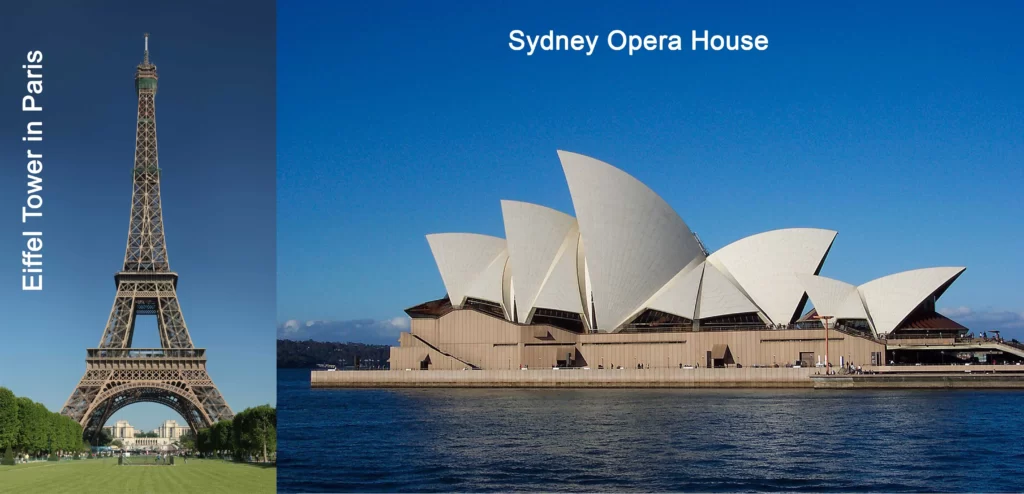
- Sense of Place: Metaphoric architecture helps foster a sense of place by reflecting the cultural, historical, and social fabric of a community. Symbolic references and metaphoric elements rooted in local traditions and values can strengthen the connection between architecture and the collective identity of a place.
i) Metaphoric Architecture and Cultural Heritage Preservation:
Metaphoric architecture has a close relationship with cultural heritage preservation, as it allows for the integration of symbolic representations that honor and celebrate a community’s history and traditions. It serves as a tool for preserving cultural heritage in the following ways:
- Symbolic Representation: Metaphoric architecture can incorporate symbolic representations of cultural heritage, such as traditional motifs, craftsmanship, or architectural styles, ensuring their continuity and visibility in contemporary built environments.
- Continuation of Narratives: By employing metaphoric elements, architects can continue the narratives and stories embedded within a community’s cultural heritage. Metaphoric architecture becomes a medium through which cultural narratives are communicated and preserved.
- Fostering Cultural Continuity: Metaphoric architecture, rooted in cultural symbolism, helps maintain a sense of continuity and cultural pride within communities. It serves as a reminder of cultural values, rituals, and historical achievements, promoting a deeper appreciation and understanding of heritage.
ii) Influence on Public Perception, User Engagement, and Community Interactions:
Metaphoric architecture influences public perception, user engagement, and community interactions within architectural spaces. It creates environments that elicit emotional responses, facilitate social interactions, and shape collective experiences.
- Public Perception: Metaphoric architecture has the power to shape public perception of a city or building. Symbolic and metaphorical elements can evoke positive associations, capturing the imagination of the public and fostering a sense of intrigue and admiration.
- User Engagement: Metaphoric architecture enhances user engagement by creating immersive and memorable experiences. Symbolic representations and metaphoric elements evoke curiosity and stimulate exploration, encouraging users to interact with and appreciate the architectural space.
- Community Interactions: Metaphoric architecture often becomes a focal point for community gatherings, celebrations, and shared experiences. It can create a sense of belonging and pride, fostering social cohesion and community interactions within the built environment.
In conclusion, metaphoric architecture contributes to the identity and character of cities by creating iconic landmarks and fostering a sense of place.
It plays a vital role in cultural heritage preservation by incorporating symbolic representations and continuing narratives rooted in tradition.
Additionally, metaphoric architecture influences public perception, user engagement, and community interactions, creating spaces that evoke emotions, facilitate meaningful experiences, and strengthen social bonds.
5) Challenges and Innovations in Metaphoric Architecture
Architects encounter several challenges when incorporating metaphoric elements into their designs, including:
- Appropriateness and Relevance: Ensuring that the chosen metaphoric elements are appropriate and relevant to the project’s context, purpose, and cultural significance can be challenging. Architects must carefully consider the intended message and its resonance with the users and community.
- Integration with Functionality: Balancing the symbolic intent with the functional requirements of a building or structure is crucial. Metaphoric elements should not compromise the usability, efficiency, or safety of the architectural design.
- Risk of Misinterpretation: Metaphoric architecture relies on symbolism, which can be subject to multiple interpretations. Architects must anticipate potential misinterpretations and strive for clarity in conveying the intended meaning of the metaphoric elements.
i) Balance between Symbolism and Functional Requirements:
Finding a balance between symbolism and functional requirements is essential in architectural projects to ensure that the design is both meaningful and practical:
- User Experience: While symbolism adds depth to architectural design, architects must prioritize the user experience. Spaces should be comfortable, accessible, and functional, accommodating the needs and activities of the users.
- Integration of Symbolic Elements: Architects should seamlessly integrate symbolic elements into the design, ensuring they enhance the functionality and overall architectural concept rather than being superficial or decorative additions.
- Collaborative Design Process: Balancing symbolism and functionality often requires collaboration among architects, engineers, and other stakeholders involved in the project. An interdisciplinary approach can help address technical constraints and ensure a harmonious integration of metaphoric elements.
ii) Innovative Approaches and Technologies in Metaphoric Architecture:
Advancements in technology and design methodologies offer architects new opportunities to push the boundaries of metaphoric architecture while maintaining practicality:
- Parametric Design: Parametric design allows architects to generate complex and intricate forms based on predefined parameters. This enables the integration of symbolic elements into the architectural design while ensuring structural integrity and functional considerations.
- Sustainable Design Strategies: Incorporating sustainable design strategies, such as passive solar design, green roofs, or natural ventilation systems, can be an innovative way to integrate metaphoric elements while addressing environmental concerns and functional requirements.
- Digital Tools and Visualization: Digital tools, including computer-aided design (CAD) software and virtual reality (VR) simulations, aid architects in visualizing and refining metaphoric elements. This facilitates the exploration of design possibilities and assists in evaluating their impact on functionality.
- Material Innovation: Advancements in material science offer architects a wide range of options to experiment with metaphoric elements. Innovative materials, such as dynamic facades or responsive surfaces, can embody symbolic representations while meeting practical requirements.
By leveraging these innovative approaches and technologies, architects can expand the possibilities of metaphoric architecture, pushing creative boundaries while ensuring the practicality and functionality of the designs.
In conclusion, architects face challenges when incorporating metaphoric elements, including relevance, integration with functionality, and the risk of misinterpretation.
Striking a balance between symbolism and functional requirements is essential, prioritizing user experience and seamless integration.
Innovations in design methodologies, technology, and materials allow architects to explore new possibilities and push the boundaries of metaphoric architecture while maintaining practicality and usability.
6) Case Studies of Metaphoric Architecture
Case Study 1
i) Burj Khalifa (Dubai, United Arab Emirates)

Metaphoric Concept: The Burj Khalifa, the world’s tallest building, embodies the metaphor of ambition, aspiration, and cultural identity. Its spiraling form and Islamic geometric patterns symbolize the dynamism of Dubai and the United Arab Emirates, while its verticality represents human achievement and technological advancement.
Design Execution: The design seamlessly integrates cultural symbolism and cutting-edge engineering. The tower’s tapering form, inspired by the Hymenocallis flower, is clad in a reflective glass curtain wall that changes its appearance with the shifting light. The architectural elements, such as the spire and the illuminated crown, enhance the metaphoric concept while serving as recognizable visual markers.
Impact: The Burj Khalifa has become an iconic symbol of Dubai and a global architectural landmark. It has transformed the city’s skyline and has contributed to its reputation as a center for innovation and modernity. The tower attracts millions of visitors, stimulating tourism and economic growth. It has also inspired future architectural endeavors by demonstrating the integration of cultural symbolism and advanced engineering.
Case Study 2
ii) Casa Batlló (Barcelona, Spain)
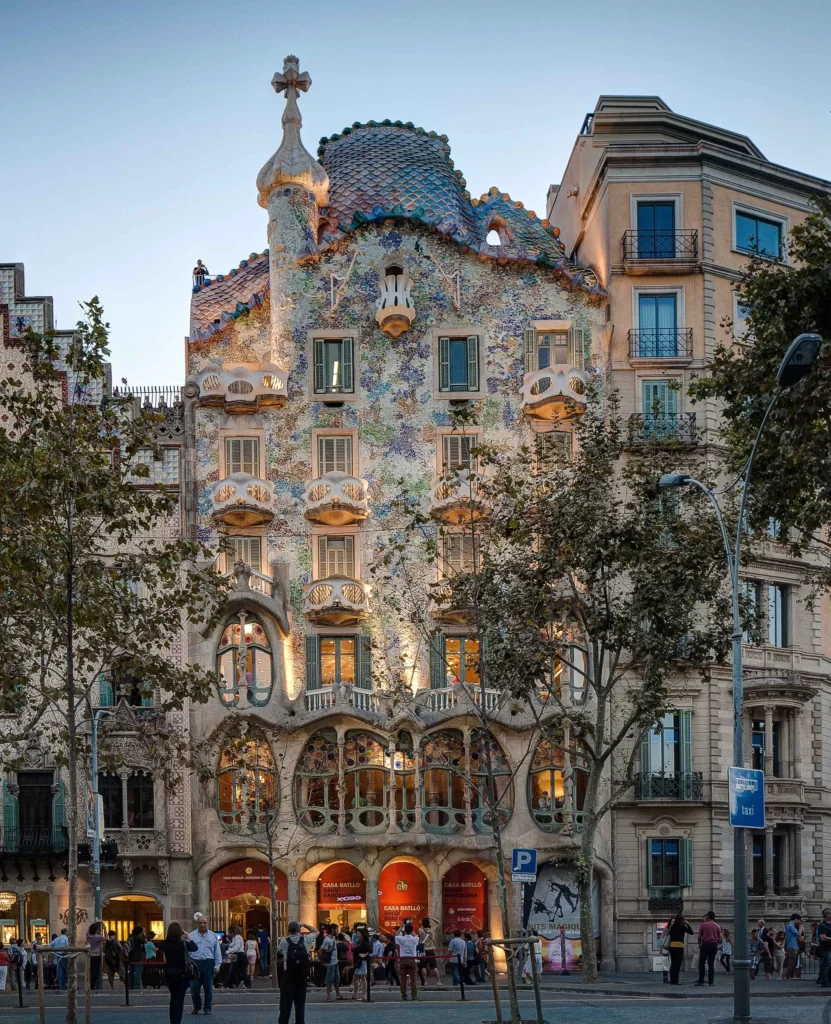
Metaphoric Concept: Casa Batlló, designed by Antoni Gaudí, is a masterpiece of metaphoric architecture. Its unique façade represents the mythological tale of Saint George slaying the dragon. The irregular, undulating forms, colorful ceramic tiles, and skeletal balconies evoke the imagery of the dragon’s scaly back and the knight’s lance.
Design Execution: Gaudí’s meticulous attention to detail is evident in the execution of Casa Batlló. The building’s sculptural façade, adorned with vibrant ceramic tiles, showcases Gaudí’s organic and playful design language. Interior spaces feature curvilinear forms, natural light, and intricate details that further enhance the metaphoric narrative.
Impact: Casa Batlló has become a symbol of Barcelona’s artistic and architectural heritage. It attracts visitors from around the world, who admire its imaginative design and metaphoric storytelling. The building contributes to the narrative of Barcelona’s modernist movement and inspires future architectural endeavors by showcasing the integration of metaphor, craftsmanship, and innovation.
Case Study 3
iii) National Museum of African American History and Culture (Washington, D.C., USA)
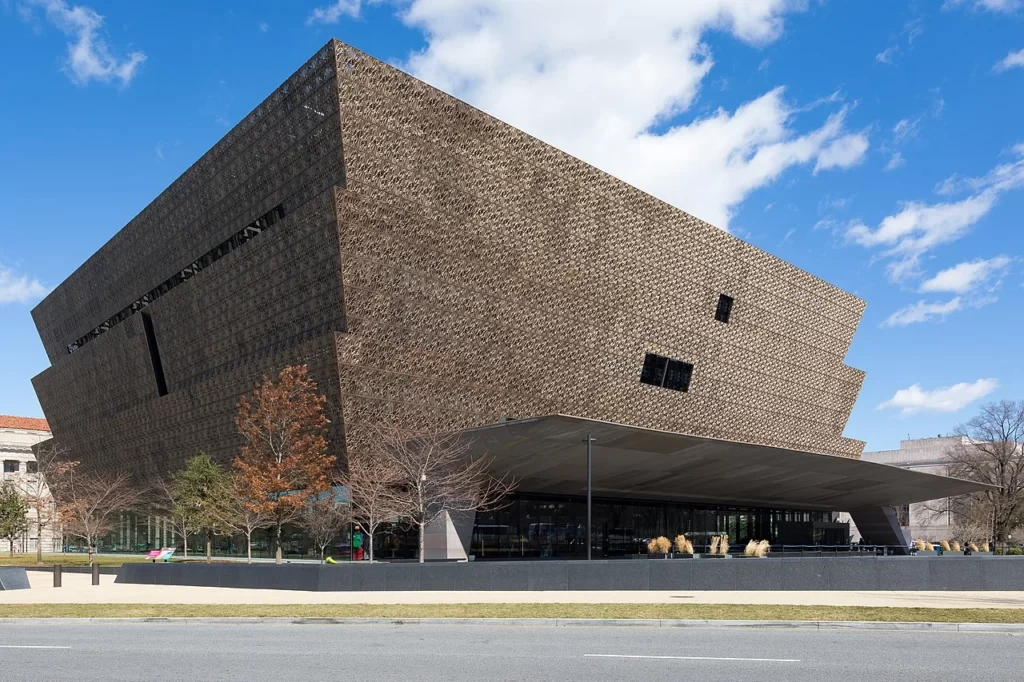
Metaphoric Concept: The National Museum of African American History and Culture (NMAAHC) embodies the metaphor of uplift, resilience, and the African diaspora experience. The building’s form references the Yoruba sculptural tradition of corona-shaped crowns, symbolizing the crown as a regal and powerful emblem.
Design Execution: Designed by David Adjaye, the NMAAHC features a striking three-tiered bronze-colored façade inspired by intricate ironwork crafted by enslaved African Americans. The architectural design combines symbolism, historical references, and contemporary aesthetics to create a profound and evocative experience.
Impact: The NMAAHC has had a transformative impact on the surrounding area, fostering a sense of pride and cultural identity. It has become a national symbol of African American history and heritage, attracting diverse audiences and facilitating dialogues on racial justice. The metaphoric architecture of the museum reinforces its narrative, highlighting the importance of representation and fostering future endeavors that prioritize inclusivity and social impact.
These case studies exemplify how metaphoric architecture integrates symbolism, design execution, and contextual relevance to create transformative and impactful built environments.
They contribute to the narratives of their respective locations, inspiring future architectural endeavors by demonstrating the power of metaphoric storytelling, cultural symbolism, and innovative design approaches.
7) Ethical Considerations in Metaphoric Architecture
Architects have ethical responsibilities when incorporating metaphoric elements into their designs. These responsibilities include:
- Cultural Sensitivity: Architects should be sensitive to the cultural context in which they are working and ensure that metaphoric elements respect the values, beliefs, and traditions of the community. Engaging with local stakeholders and conducting thorough research can help architects navigate cultural sensitivities appropriately.
- Representation and Inclusivity: Architects must strive for inclusive design that represents diverse cultural perspectives and avoids stereotypes or misappropriation. It is essential to create spaces that foster inclusivity and celebrate the identities of all users.
- Environmental Considerations: Metaphoric architecture should also consider environmental sustainability and minimize any negative impact on the natural surroundings. Ethical architects prioritize environmentally responsible practices and incorporate sustainable design principles into their projects.
i) Controversies and Cultural Sensitivities:
The use of certain symbols or metaphors in architectural design can give rise to controversies or cultural sensitivities. It is crucial for architects to be aware of potential issues and navigate them thoughtfully:
- Misinterpretation: Metaphoric elements can be subject to multiple interpretations, leading to misrepresentation or misunderstanding. Architects should anticipate how symbols might be interpreted differently and strive for clarity in conveying the intended meaning.
- Cultural Appropriation: The use of cultural symbols or metaphors without proper understanding or permission can be seen as cultural appropriation. Architects must be cautious when incorporating elements from cultures that are not their own and should seek collaboration and consultation with relevant stakeholders.
- Historical Significance: Certain symbols or metaphors may carry historical baggage or be associated with traumatic events. Architects should be mindful of the potential sensitivities these symbols may evoke and consider alternative metaphoric expressions that respect the memory and experiences of affected communities.
ii) Importance of Cultural Context and Respect for Communities:
Cultural context and respect for communities are paramount in metaphoric architecture. Architects should consider the following:
- Contextual Relevance: Metaphoric elements should be rooted in the local context and reflect the specific history, traditions, and cultural values of the community. This ensures authenticity and strengthens the connection between the architecture and its surroundings.
- Community Engagement: Engaging with the community throughout the design process helps architects understand their needs, aspirations, and concerns. It fosters a sense of ownership and ensures that metaphoric elements align with the community’s values and aspirations.
- Ethical Collaboration: Architects should collaborate with diverse teams that include local professionals, cultural experts, and community representatives. This collaborative approach ensures that metaphoric architecture respects the values, perspectives, and narratives of the communities it serves.
In conclusion, architects have ethical responsibilities when employing metaphoric elements, including cultural sensitivity, representation, inclusivity, and environmental considerations. Controversies and cultural sensitivities may arise, necessitating careful navigation and respectful engagement.
The importance of cultural context, inclusivity, and respecting community values cannot be overstated, as these elements contribute to the ethical practice of metaphoric architecture, ensuring that it creates meaningful and respectful spaces for all.
8) Future Trends and Possibilities
Metaphoric architecture is evolving with emerging trends and future directions that align with broader societal and environmental concerns:
- Sustainability Integration: Metaphoric architecture is increasingly incorporating sustainable design principles, such as passive design strategies, energy-efficient systems, and the use of eco-friendly materials. The integration of symbolism with sustainability aims to create environmentally responsible and regenerative built environments.
- Technology Integration: Advancements in technology offer new possibilities for metaphoric architecture. From parametric design tools to digital fabrication techniques, architects can explore intricate forms and materiality, enhancing the expressive potential of metaphoric elements.
- Experimental Design Approaches: Architects are pushing the boundaries of metaphoric architecture through experimental design approaches. They are exploring unconventional forms, alternative materials, and innovative construction methods to create unique and thought-provoking architectural expressions.
i) Metaphoric Architecture and Addressing Global Challenges:
Metaphoric architecture has the potential to address pressing global challenges, including climate change and social inequality:
- Climate Change Mitigation: Metaphoric architecture can contribute to climate change mitigation by incorporating sustainable design strategies, renewable energy systems, and nature-inspired solutions. Symbolic representations of environmental stewardship can raise awareness and inspire action toward a more sustainable future.
- Social Equality and Inclusivity: Metaphoric architecture has the power to foster social equality and inclusivity. By incorporating metaphoric elements that celebrate diversity, honor cultural heritage, and create inclusive spaces, architects can contribute to social cohesion and address societal disparities.
ii) The Continued Importance of Metaphoric Architecture:
Metaphoric architecture will continue to play a vital role in shaping the built environment of the future:
- Human Connection and Identity: Metaphoric architecture creates a meaningful connection between people and the built environment. It reflects cultural identities, tells stories, and evokes emotions, enriching the human experience and creating a sense of place.
- Inspiring Change and Progress: Metaphoric architecture has the potential to inspire change and progress by challenging conventional norms and reimagining possibilities. It sparks innovation, encourages dialogue, and shapes the way we perceive and interact with architectural spaces.
- Cultural Resilience and Preservation: Metaphoric architecture can contribute to cultural resilience and preservation by honoring traditions, preserving heritage, and adapting to changing societal needs. It helps communities retain their identity and promotes a sense of pride and continuity.
In conclusion, metaphoric architecture is embracing emerging trends such as sustainability, technology integration, and experimental design.
It has the potential to address global challenges such as climate change and social inequality through its expressive power and capacity for meaningful symbolism.
As we look to the future, metaphoric architecture remains relevant and important in shaping the built environment, fostering human connection, inspiring change, and preserving cultural heritage.
Its ability to create compelling narratives and evoke emotions will continue to influence and transform the architectural landscape for generations to come.
9) Conclusion
Metaphoric architecture serves as a powerful means of communication and expression, creating meaningful and inspiring built environments. Throughout the article, we have explored its significance, principles, historical roots, and its impact on cities and communities. Metaphoric architecture goes beyond aesthetics, utilizing symbolism to convey ideas, evoke emotions, and enhance user experiences.
We have traced the origins of metaphoric architecture in ancient civilizations and its revival during the Renaissance period. We also discussed its emergence in the 20th century and its influence on contemporary architectural practices. The use of metaphoric elements, including cultural, religious, and historical references, adds depth and resonance to architectural designs.
Metaphoric architecture contributes to the identity and character of cities, fostering a sense of place and cultural heritage preservation. It shapes public perception, engages users, and facilitates community interactions within architectural spaces. However, architects must navigate ethical responsibilities, ensuring cultural sensitivity, inclusivity, and respect for the values of the communities they serve.
The article highlighted challenges in incorporating metaphoric elements, such as balancing symbolism with functional requirements. Innovative approaches and technologies enable architects to push the boundaries of metaphoric architecture while maintaining practicality and sustainability.
Notable case studies showcased exemplary metaphoric architecture worldwide, analyzing their concepts, design execution, and impact on their surroundings. These examples demonstrated the potential of metaphoric architecture to create memorable narratives, inspire future endeavors, and contribute to the cultural richness of their respective locations.
In conclusion, metaphoric architecture remains a relevant and impactful practice in shaping the built environment. Its ability to communicate ideas, inspire emotions, and resonate with cultural contexts enriches our physical surroundings. The article encourages further exploration and integration of metaphoric elements in architectural practices to create meaningful, inspiring, and culturally resonant built environments. By embracing the power of metaphoric architecture, architects can create transformative spaces that engage and inspire individuals and communities for years to come.